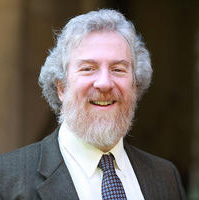Or Chadash (New Light): Electromagnetic or Supernal?

“Or chadash al Tsiyon ta’ir, venizkeh kulanu m’heirah le’oro” (Cause a new light to shine on Zion, and may we all quickly have the privilege to benefit from its radiance). Each morning, before reciting the Shema’, there is a blessing that opens with a quote from Isaiah praising God, “who forms light and creates darkness,” and looks back to the first great act of Creation—the creation of light and the establishment of cycles of light and darkness, designated as day and night.
Many commentators have wondered about the or chadash introduced at the very end of this blessing (p. 31 in the Rabbinical Assembly’s Sim Shalom for Weekdays). What does the phrase mean—is this new light to be somehow different? Will the laws of physics be abrogated, upsetting the natural order of the universe?
An alternate approach is to understand this as an entirely heavenly light, associated with the end of time, the messianic era. We recall the enigmatic prophetic metaphor, “In those days the sun will not be your light by day, nor the moon at night, but God will be your Eternal illumination (Isa. 60:19).” This certainly evokes a supernal, God-centered “light,” and many commentators suggest that these words represent a yearning for messianic redemption. Some authorities, including Saadia Gaon (10th century), judged this messianic reference to be so anomalous that it should be removed entirely.
Aryeh Leib Gordon (19th century Vilna) finds a middle pathway in his Tikkun Tefillah commentary. After quoting Proverbs 6:23—“For commandment is a lamp and the Torah is light.”—he observes, “There is yet a light greater and more exalted than the sun—and this (light) is the Torah!” Gordon’s synthetic approach allows us to retain the idea of a spiritual light without messianic overtones.
In these final days of Hanukkah, we encounter lights each day. As noted last week, these lights embody holiness. Perhaps they inspire us to draw close to the Torah that is abidingly close to us, and to dream of the ethereal light in which all things will be seen with a greater and deeper clarity.
Hear a contemporary interpretation of the text and musical setting by Steve Klaper.
As always, I am interested to hear comments and reflections on these thoughts about prayer and liturgy. You may reach me at sabarth@jtsa.edu.



